
by fljustice | Mar 20, 2011 | Books, Fiction, Free stuff, Interviews
Author Interview: Melanie McDonald
It’s been way too long since I posted an author interview on this blog, but finally found a great candidate. Melanie McDonald just published an acclaimed new literary historical novel Eronemos about Emperor Hadrian’s doomed young lover Antinous. From the back:
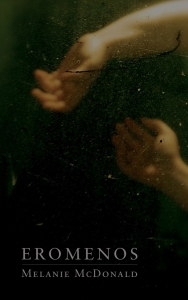 “Eros and Thanatos converge in this story of a glorious youth, an untimely death, and an imperial love affair that gives rise to the last pagan god of antiquity, Antinous.
“Eros and Thanatos converge in this story of a glorious youth, an untimely death, and an imperial love affair that gives rise to the last pagan god of antiquity, Antinous.
In this coming-of-age novel set in second century Rome, the Greek youth Antinous of Bithynia recounts his seven-year affair with Hadrian, the fourteenth Roman emperor. In a partnership more intimate than Hadrian’s political marriage, Antinous captivates the most powerful ruler on the earth.
This version of the story of the emperor and his beloved ephebe envisions the life of the youth who after death achieved apotheosis as a pagan god whose cult of worship lasted for hundreds of years, and gives voice to Antinous, whose image still appears in museums around the world.”
Ms. McDonald not only agreed to an interview, but provided a signed copy as a giveaway (details at the end of the post.)
Faith L. Justice: I’m sure two of the first questions readers have for you is, “How do you pronounce the title?” and “What does it mean?” (more…)
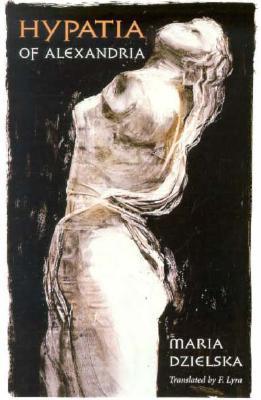
by fljustice | Mar 12, 2011 | Biographies, Books, Hypatia, Reviews, Wonderful Women
Hypatia of Alexandria: Two Books
It’s March—Women’s History Month and the anniversary of a remarkable woman’s death. In AD 415, a Christian mob murdered Hypatia, the renowned Lady Philosopher of Alexandria. The vicious act shocked the city and shamed the early Church. Socrates Scholasticus tells the story in his Historia Ecclesiastica:
“Hypatia, daughter of the philosopher Theon, who made such attainments in literature and science, as to far surpass all the philosophers of her own time…For all men on account of her extraordinary dignity and virtue admired her the more. Yet even she fell a victim to the political jealousy which at that time prevailed. For as she had frequent interviews with Orestes, it was calumniously reported among the Christian populace, that it was she who prevented Orestes from being reconciled to the bishop. Some of them therefore, hurried away by a fierce and bigoted zeal, whose ringleader was a reader named Peter, waylaid her returning home, and dragging her from her carriage, they took her to the church called Caesareum, where they completely stripped her, and then murdered her with tiles. After tearing her body in pieces, they took her mangled limbs to a place called Cinaron, and there burnt them. This affair brought not the least opprobrium, not only upon Cyril, but also upon the whole Alexandrian church. And surely nothing can be farther from the spirit of Christianity than the allowance of massacres, fights, and transactions of that sort. This happened in the month of March during Lent, in the fourth year of Cyril’s episcopate, under the tenth consulate of Honorius, and the sixth of Theodosius.”
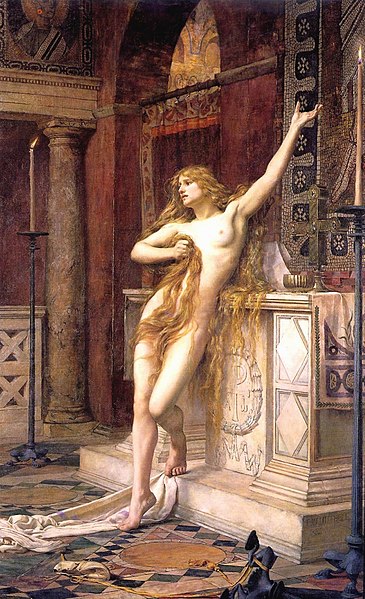
Hypatia, painted by Charles William Mitchell in 1885.
Since that time, only fragments about Hypatia’s life have come down to us; allowing poets, novelists, playwrights, scientists, feminists and religionists (both pro and anti) to appropriate her story for themselves. Her story has resonated down through the years, touching many people. She’s a major character in my novel Selene of Alexandria, the subject of the recent movie Agora directed by Alejandro Amenabar, and she rated a plate in Judy Chicago’s massive art piece The Dinner Party. She’s the subject of plays, poetry, propaganda and new age pagan polemics. Her life is represented in art and music. But what do we really know about her? Not much.
In researching my novel, I waded through a literary swamp, with no guide, trying to get at some coherent view of Hypatia and her story. She was young/middle aged/older when she died. She was single/married/promiscuous/virginal. She was a pagan/witch/Christian. She was a brilliant mathematician/scientist to some and, according to others, contributed nothing worthwhile in either discipline. I read the few primary sources, but didn’t have the academic background to evaluate their usefulness. Socrates was a contemporary, but a church historian. Damascius was a pagan who wrote a full generation later. John of Nikiu wrote 200 years later. Who had an agenda and what was it?
Two scholars have attempted to pull the pieces together in book form in the last two decades: Maria Dzielska, a Polish classics scholar, with Hypatia of Alexandria; and mathematics professor Michael A. B. Deakin with Hypatia of Alexandria: Mathematician and Martyr. I’ve read both, several times, in my research and want to share my thoughts. (more…)
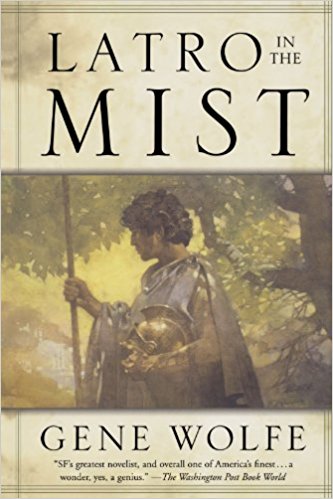
by fljustice | Feb 24, 2011 | Books, Fiction, Reviews
“Latro in the Mist” by Gene Wolfe
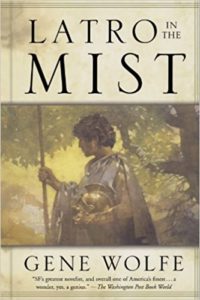 I occasionally run across a book that challenges me; that makes me work for the story and enjoy the labor; that awes me with the craft of the writing. Usually these are considered “literary novels.” I also find a lot of literary novels tedious, because I’m partial to plot-driven stories. But Latro in the Mist surprised me. It’s a fantasy novel with gods and ghosts (which may not be real, see my discussion below.) It’s a historical novel about real events set in Greece in 479 B.C., and populated with historic characters. It’s also a finely crafted literary novel that makes the reader think beyond the story and characters about the nature of memory and self, friendship and loyalty, and the journey that is life. (more…)
I occasionally run across a book that challenges me; that makes me work for the story and enjoy the labor; that awes me with the craft of the writing. Usually these are considered “literary novels.” I also find a lot of literary novels tedious, because I’m partial to plot-driven stories. But Latro in the Mist surprised me. It’s a fantasy novel with gods and ghosts (which may not be real, see my discussion below.) It’s a historical novel about real events set in Greece in 479 B.C., and populated with historic characters. It’s also a finely crafted literary novel that makes the reader think beyond the story and characters about the nature of memory and self, friendship and loyalty, and the journey that is life. (more…)

by fljustice | Jan 28, 2011 | Biographies, Books, Reviews, Wonderful Women
“Catherine de Medici: Renaissance Queen of France” by Leonie Frieda
Long, long ago in a youth far, far away, I read a biography of Catherine de Medici, so I was already familiar with her story. I have to admit, the details were hazy: I remembered something about poison, religious wars and that she was Mary, Queen of Scots’ mother-in-law. Then a couple of years ago, my husband and I took a biking vacation in the Loire valley and visited numerous castles and gardens along way, several associated with Catherine and her rival Diane de Poitiers; so I was reacquainted with the general outlines of her story. Which brings me to: Catherine de Medici: Renaissance Queen of France by Leonie Frieda.
 From the Introduction:
From the Introduction:
“Catherine de Medici has variously been called ‘The Maggot from Italy’s Tomb’, ‘The Black Queen’ and ‘Madame La Serpente’. To many she is the very incarnation of evil. It is, I believe, as mistaken a judgment as it is bigoted. Yet it is not far removed from the overall verdict of history on one of the most remarkable women of the sixteenth century.” (more…)
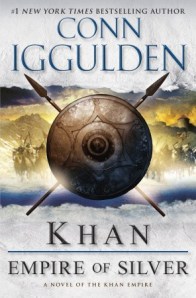
by fljustice | Jan 4, 2011 | Books, Fiction, Reviews
“Khan: Empire of Silver” by Conn Iggulden
From the Synopsis:
“Genghis Khan is dead, but his legend and his legacy live on. His son Ogedai has built a white city on a great plain and made a capital for the new nation. Now the armies have gathered to see which of Genghis’ sons has the strength to be khan. The Mongol empire has been at peace for two years, but whoever survives will face the formidable might of their great enemy, China’s Song dynasty.”
 Conn Iggulden (author of the Emperor series on the life of Julius Caesar) brings us the fourth in his Conqueror series covering the history of the Mongols. The book begins with a very unhorde-like activity…building a city. But quickly moves into palace intrigues as Genghis’ heir, the ailing Ogedai, moves to thwart his brother’s attempt to assassinate him and take over the assembled nation. From there, Iggulden takes us on a roaring ride—all battles, military strategy, and new weapons (including proto-cannons)—lots of blood, death, and unimaginable destruction. Not having lived in or studied this time period, I couldn’t say if it accurately reflects the thinking of the time, but it felt visceral and grounded in the known facts. Iggulden makes good use of everyday details from food, drink, clothes, geography and shamanism to build a world and give us access to it. (more…)
Conn Iggulden (author of the Emperor series on the life of Julius Caesar) brings us the fourth in his Conqueror series covering the history of the Mongols. The book begins with a very unhorde-like activity…building a city. But quickly moves into palace intrigues as Genghis’ heir, the ailing Ogedai, moves to thwart his brother’s attempt to assassinate him and take over the assembled nation. From there, Iggulden takes us on a roaring ride—all battles, military strategy, and new weapons (including proto-cannons)—lots of blood, death, and unimaginable destruction. Not having lived in or studied this time period, I couldn’t say if it accurately reflects the thinking of the time, but it felt visceral and grounded in the known facts. Iggulden makes good use of everyday details from food, drink, clothes, geography and shamanism to build a world and give us access to it. (more…)

by fljustice | Nov 7, 2010 | Books, Fiction, Reviews
“Little Dorrit” by Charles Dickens
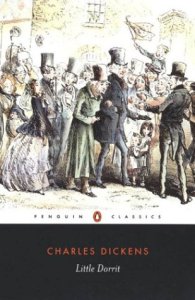 Every now and then, I turn back to the classics and remind myself why they are “classic.” Charles Dickens has always been a favorite of mine, but I had never read Little Dorrit. I picked up a Wordsworth edition (over 800 pages with introduction, preface and footnotes) which sat on my “To Be Read” shelf for several months before I plucked up the energy to tackle it. Once I started, I couldn’t put it down.
Every now and then, I turn back to the classics and remind myself why they are “classic.” Charles Dickens has always been a favorite of mine, but I had never read Little Dorrit. I picked up a Wordsworth edition (over 800 pages with introduction, preface and footnotes) which sat on my “To Be Read” shelf for several months before I plucked up the energy to tackle it. Once I started, I couldn’t put it down.
The story is simple: a few good souls struggle with fate’s decrees, society’s vagaries, fools and evil-doers to find “a modest life of usefulness and happiness.” Oh, but what innocent souls, twisted evil-doers and delicious fools! There’s a reason why “Dickensian” is applied to certain well-drawn characters. Dickens saw deep into the heart of humankind and had a wonderful facility for bringing people to life in lush eccentric detail. Amy Dorrit, as the titular character, is tiny in size, but huge in impact. She’s gentle, giving, industrious and the emotional bulwark of her family and friends. In spite of being born and raised in a debtor’s prison where her gentleman father was incarcerated for over twenty years, Little Dorrit is beloved by all who come to know her. Arthur Dennam is a man entering middle age and haunted by a secret he suspects and his mother won’t divulge. He’s an honorable man and wants no one hurt on his behalf. But he falls into the trap of denying his emotions and settling for less than he’s worth. (more…)

 “Eros and Thanatos converge in this story of a glorious youth, an untimely death, and an imperial love affair that gives rise to the last pagan god of antiquity, Antinous.
“Eros and Thanatos converge in this story of a glorious youth, an untimely death, and an imperial love affair that gives rise to the last pagan god of antiquity, Antinous.






